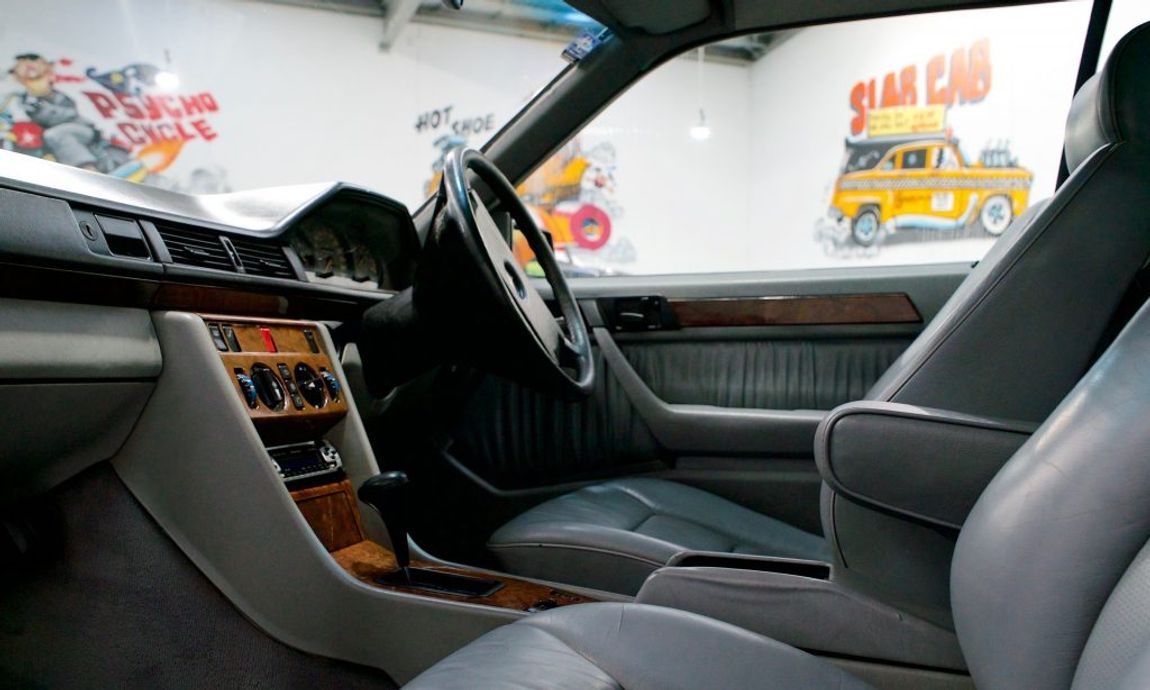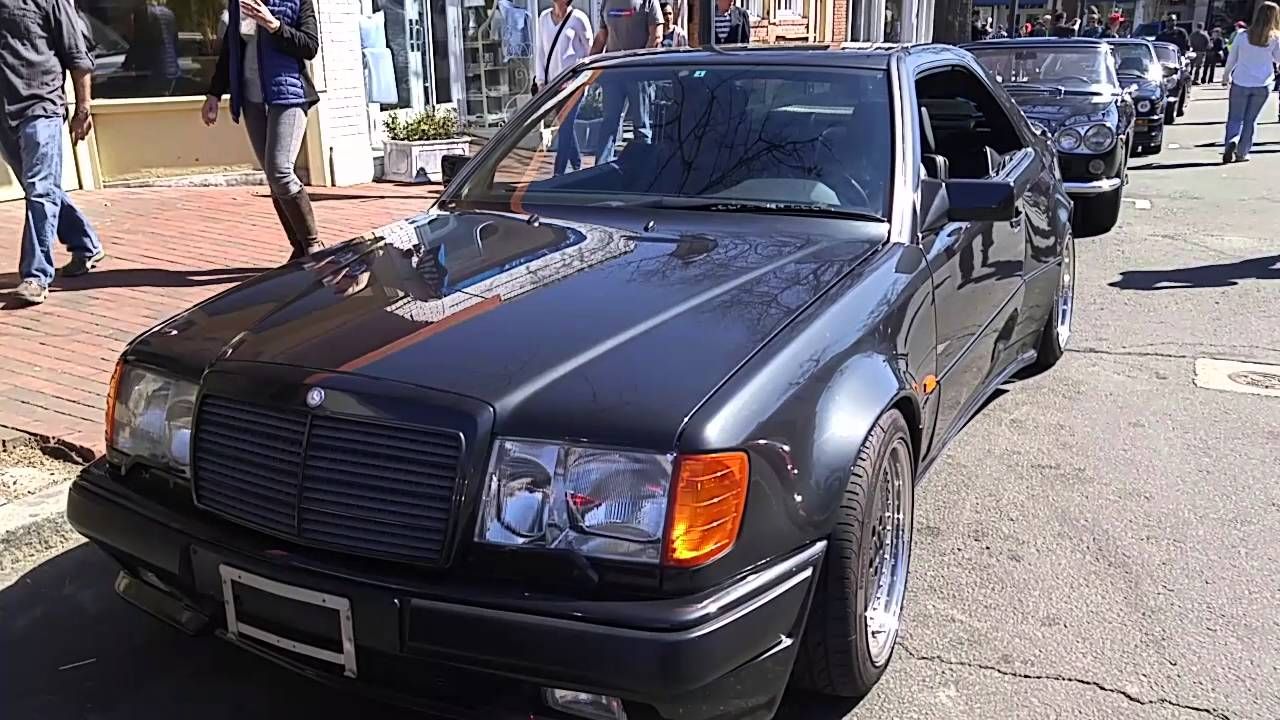If you dive deep back into the history of automobiles, the Mercedes-Benz 300CE is definitely a name you'd find that has aged like fine wine. Not only has it survived and kept up to date with technology, but this Mercedes-Benz lineage was also impeccable.
Modeled with the flagship SEC in mind, the 300CE bestowed graciously upon this world in the 1987 Geneva Motor Show. People who were meticulous enough to read through the offered specs knew immediately that this beast is a gem.
Mercedes-Benz is one of the few brands that demonstrated a perfect blend of elegant engineering with excellent ergonomics. The performance was simply fluid due to out-of-the-box aerodynamics.
For many, this coupe variation of the 124 collections became especially full-size given its glossy sports activities styling and clean inline-six engines. Not only this, but many ostentatious features acted as a crowd magnet.
The Mercedes-Benz 300CE Simply Out Performed Its Rivals
It is said the W124 series left its mark in the automobile industry. Implementing elegant design and incorporating advanced tech innovations made the sector adapt to the same.
The 300CE featured a brand new M103 engine. It was a longitudinally aligned, straight inline-six engine ( L6 ) with a 15 degree right inclined crossflow cylinder head. With a single overhead cam design, each cylinder had two valves each.
The 3.0-liter engine was capable of producing 185 hp at 5,700 rpm. It had an impressive maximum 6,200 rpm. Its maximum torque set new standards with 192 lb-ft at 4,250 rpm. The sheer power was transmitted to the rear wheel using a manual 5-speed gearbox.
A more well-recognized model of the 300CE was the facelift version unveiled with the fame left behind by its predecessor in 1990. This model introduced a brand new twin-cam multi-valve engine that boosted strength drastically.
You'd be surprised to know that this one feature pushed its power from about 180 hp to 224 hp. Blazing through winds at a top speed of 141 mph, the car set impressive acceleration records for a 1980 manufactured rear-wheel-driven car. It accelerated from 0 to 60 mph in just 7.9 seconds, which was pretty solid for the time.
The incredible top speeds and initial accelerations were a result of its relatively lower curb weight. Around 3,100 lbs, the car weighed at least 220 lbs lesser than other cars of its time.
It also came pre-equipped with an Oxygen sensor in the exhaust system that enhanced its performance by running parallel with a semi-electronic fuel injection system. Even the fuel economy wasn't a factor that disappointed us. Unlike most sports cars that had low efficiency, the 300CE had an efficient 30 mpg. With a full tank capacity of 18.5 gallons, the car ranged out around 462 miles easily.
Every aspect of the 300CE set records for the next oncoming generation of automobiles.
The Benz 300 CE Was Well-Designed
Designed and built using Benz's family technology, especially the E-Class, the 124 collection coupes were produced with notable exceptional specs and low numbers. You could say these were built to be an antique, and a collectible relic for the future.
As mentioned earlier, amidst the 2.6 million 124 series cars, only 141,498 were coupes. Amongst these limited-access coupes, 43,486 were the 300CE. In other words, the 300CE represents much less than 2% of all 124 collection cars produced.
This relatively low manufacturing was a genius market gimmick that turned the 300CE into a demanding collectible over time. Something that made this collection easily identifiable was its affordability as a supercar.
In the late winter of 1980, the exterior of the W124 program was concluded. This was later selected as the main design by Design Director Bruno Sacco and approved by the Board of Directors in early 1981. The 124 collections remained running till late 1996.
The box dimensions of the late Mercedes-Benz 300CE was: 183.4 x 68.5 x 55.5 inches. The renowned angular design was something that stood out in traffic jams in the 1980s. This angular exterior alongside looks also contributed to reducing air drag. With the least air drag coefficient of 0.28 in 1988, the car broke records.
Mercedes-Benz reformed its aerodynamics rather than staying put with the contemporary ones. It was implanting a plastic mold for the undercarriage, streamlined air passage beneath the car for improved fuel efficiency, and reduced noise while traveling.
On top of its buttery smooth ride, the ride comfort and handling that were mainly influenced by the chassis was also improved using independent, anti-roll front and rear suspension. The braking systems entirely relied on disc brakes on the 15-inch rim.
The eccentric windscreen wipers perceived a better cleaning option by allowing the wiper to reach the top corners. It also had optional rear-seat headrests that could be folded down to improve rear visibility when desired.
The attractive central console well complements the leather upholstered interiors and wood veneers. The newly remodeled 300CE that premiered in 1991 had electrical slide sunroofs and electric memory seats.
For many reasons, the 300CE was a gem in this industry during the end of the 1900s.
What Makes The 1990 Mercedes-Benz 300CE So Widely Appreciated?
Many argue that although the 124 collection represents Benz masterpieces that have been designed via engineers with a no-holds restriction technique and a “cost-is-no-object” attitude.
While it may seem true, the series laid down the institution of true elegance in automobile engineering. With reliable specs, lavish interiors, and sophisticated looks, the car justified its base price of $52,500.
Currently, finding a used 300CE would cost you somewhat south of $7,000. A pretty pocket-friendly price for relic collectors, if you ask us.




